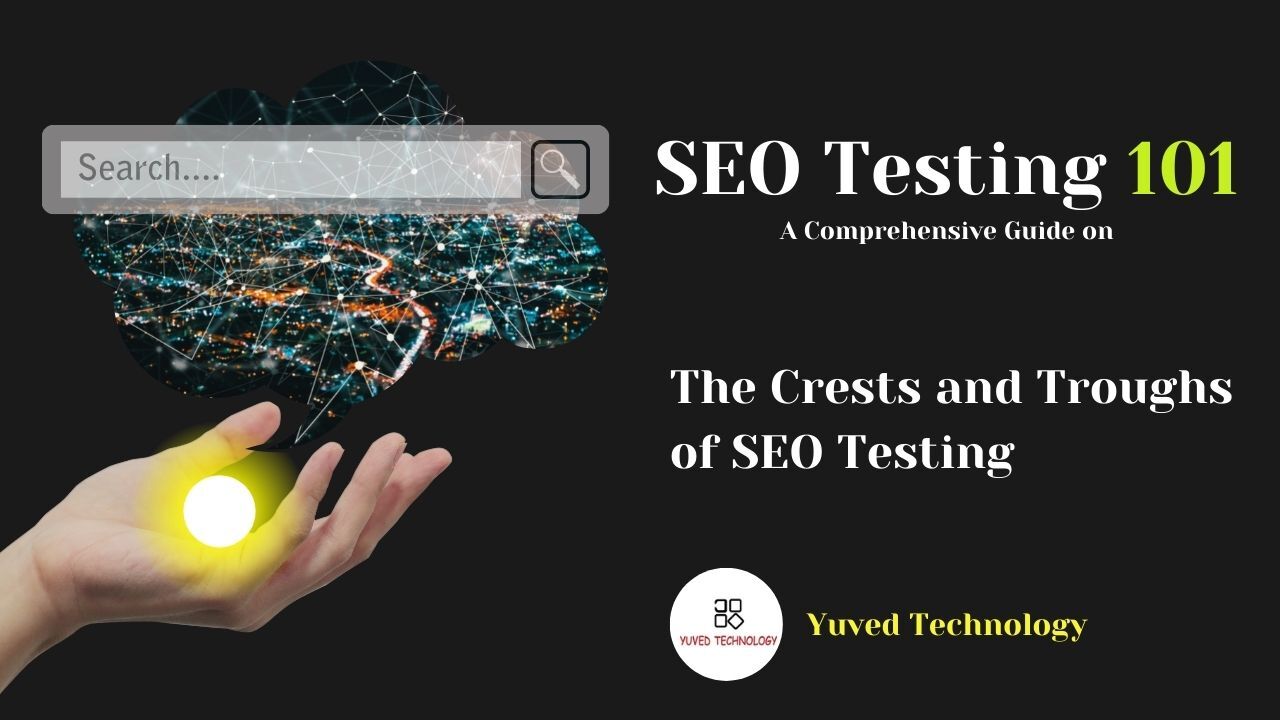One thing that is evident after the COVID-19 economic massacre is the dominance of digital marketing channels. Brands are now relying on their online face more than ever, and SEO has become the biggest weapon to gain more website traffic through increased visibility on SERPs.
However, SEO is an umbrella term for a myriad of strategies. With so many moving parts involved, it can be daunting to directly attribute improvements in organic ranking performance. The most grueling aspect of SEO is proving that the juice is worth the squeeze, and proper SEO testing can help with that.
What is SEO Testing?
SEO Testing is the procedure of evaluating the steps to optimize your webpage for the SERPs. In a nutshell, the process involves making changes to your site and measuring the impact of the changes on organic search traffic or rankings. A/B Testing or split testing is the go-to way to weigh the outcomes for your SEO strategy.
In theory, SEO testing can sound simple, but unlike CRO or PPC testing, it isn’t that straightforward to trace SEO-related changes. A plethora of factors influence a website’s organic performance at a given time, for which SEO testing must be conducted precisely by considering a bunch of variables.
Why is SEO testing essential?
In the dynamic world of Search Engine Optimization where Google’s ranking algorithms are a black box, SEO testing can show you what works. There are more than 200 ranking factors that the SERP algorithms use alongside ML to try and show the best results for the users’ queries. In addition, different niches are also evaluated against the diverse factors and criteria to use several ranking factors and potentially complete the algorithms used for ranking.
There is a multitude of ways to improve rankings in Google, and all of these might work- but are they still relevant and applicable to a site in your niche? This is when website testing comes into the big picture. It allows you to evaluate the factors and see whether the changes work on your site or not.
The basics of SEO Testing
Most websites go about SEO testing in three primary ways. However, only one is the clear winner in terms of timeliness, efficacy, and results. Let’s have a dive into the most preferred method of SEO testing.
Time-Based SEO Testing
Time-based SEO testing uses almost the same concept as a serial SEO test. But, in the time-based testing, you will have to make a change to just one page and observe how the change works for you. This method is not recommended because it isn’t very clever to assume the result by optimizing just one page.
SEO Serial Test
SEO Serial Test is the OG SEO Test. You can use this method to make a change to an entire page across your website and then monitor the rankings and organic traffic for that page type. Regardless of how effective this process seems, SEO Serial Testing is not recommended as well because of the following reasons:
- When the changes negatively influence the SEO, they impact all your pages, not just one or two.
- Serial testing is more time-consuming as you have to make a sitewide change and you will have to spend even more time if you have to roll the change back.
- Serial Testing isn’t responsible for variables or seasonality outside your control.
A/B Testing or Split Testing
If you want to get the best results for your SEO campaign, then A/B Testing or Split Testing is your one-stop solution. This method uses the same concept as its more popular cousin- CRO A/B testing. However, as SEO involves serving an audience of one search engine, the process has to be changed a bit. Split Testing
A/B Testing begins by creating two groups of web pages- the variable group where the changes are inculcated and the control group which remains the same. After incorporating enough changes to generate statistical significance, the results are evaluated. If any improvement in the performance of the variable group is noticed, then the test is a success.
Most SEO tools use split testing because it provides the most successful results with substantial monthly organic sessions. The A/B Testing or Split Testing method is preferred because of the following reasons:
- When the change negatively influences the SEO, the changes are reflected only on a small subset of pages.
- A/B Testing is not as time-consuming as the other two as you only have to make appropriate changes to a small subset of pages.
- The testing process helps in accounting for variables and seasonality outside of your control.
Get Started with SEO Testing from Yuved Technology
SEO Testing is essential to stimulate traffic and win high rankings. Most digital marketers stick with the best practices of SEO, but SEO testing is the only way to prove that the SEO tactics are actually working. They are the closest that you can get to beating search engines at their own game.
Sounds interesting; doesn’t it? Then get started with SEO testing now with professional help from Yuved Technology.

